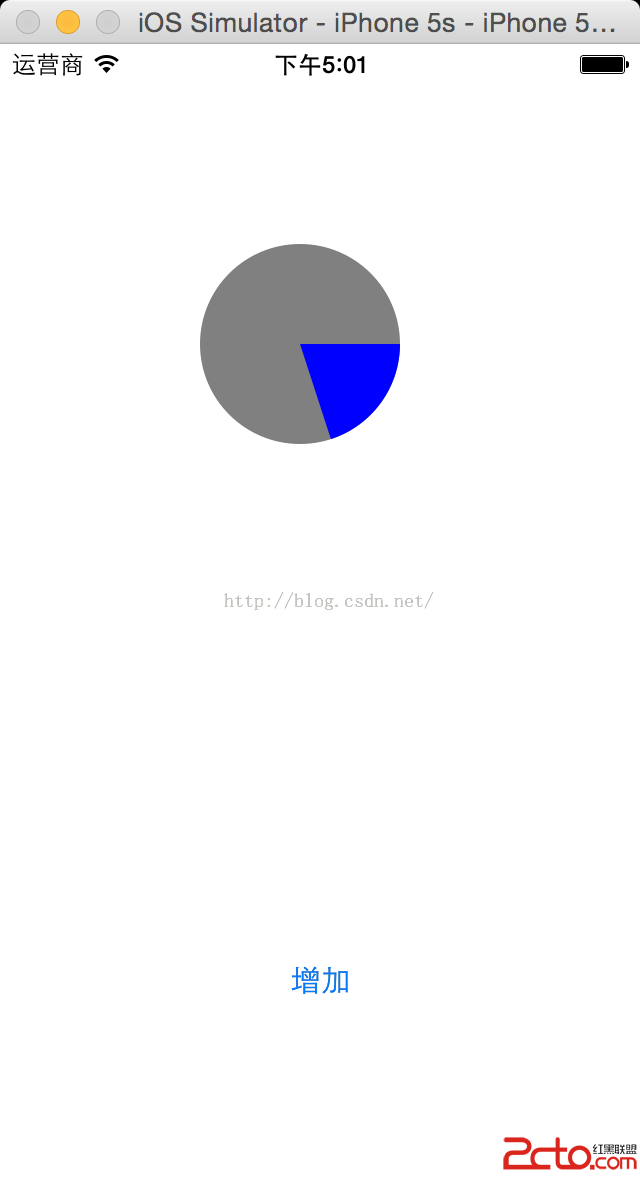IOS 階段學習筆記(字符串操作)
編輯:IOS開發綜合
#include <stdlib.h>
#include <string.h>
int main(){
char str[100] = "hello world";
char *p = "hello world";
//*p ='H';//常量字符串不可以修改,p指向只讀的地址
p = str;
*p = 'H';
// printf("%s",str);
p = (char*)malloc(100);
//判空
if(p==NULL)
return 0;
//清零
memset(p,0,100);
printf("p=%p\n",p);
//字符串賦值
//memcpy(p, "helloworld", 10);//方法一:內存拷貝
sprintf(p,"%s","helloworld");//方法二:sprintf()輸出賦值
//p = "helloworld";//錯誤,p指向常量區,把申請的內存都丟了
printf("p=%p\n",p);
printf("%s",p);
//釋放
free(p);
return 0;
}
2)字符操作函數, 形參為對應參數的ASCII碼值,滿足條件返回1,不滿足返回0 ; 需要引用頭文件#include <ctype.h> 1、int isalnum(int);// 判斷是否是數字或者字母 2、int isalpha(int);//判斷是否是英文字符 3、int isdigit(int);//判斷是否是數字 0~9 4、int islower(int);//判斷是否是小寫字母 5、int isupper(int);//判斷是否是大寫字母 6、int isxdigit(int);//是否是16進制數字 7、int tolower(int);//轉成小寫 8、int toupper(int);//轉成大寫 9、int digittoint(int);//把十六進制數字字符轉換成整型 10、int ishexnumber(int);//等價 isxdigit 11、int isnumber(int);//等價isdigit 實例代碼:
1 #include <ctype.h>
2 int main()
3 {
4 printf("%d\n",isalnum('1'));//1
5 printf("%d\n",isalpha('1'));//0
6 printf("%d\n",isdigit('a'));//0
7 printf("%d\n",islower('A'));//0
8 printf("%d\n",isupper('a'));//0
9 printf("%d\n",isxdigit('F')); //1
10 printf("%c\n",tolower('A'));//a
11 printf("%c\n",toupper('a'));//A
12 printf("%d\n",digittoint('1'));//1
13 printf("%d\n",ishexnumber('a'));//1
14 printf("%d\n",isnumber('a'));//0
15 return 0;
16 }
3)字符串拷貝 使用strcpy或strncpy 後者可以指定拷貝長度。 實例代碼:
1 int main()
2 {
3 char str[20] ="XXXXXXXXXXXXXX";
4 char *p = "hello";
5 strcpy(str,p);//從p的位置拷貝字符串,把p後面的'\0'也拷貝過來.如果接收的字符串空 間不夠大,可能會越界 。
6 printf("%s\n",str);//從str開始,打印到\0結束
7 for(int i=0;i<10;i++){
8 printf("str[%d]=%c=%d\n",i,str[i],str[i]);
9 }
10 unsigned long len=strlen(str);
11 strncpy(str,p,len-1);//最後的參數:最大拷貝字符數.一般設置為目的字符串bufsize-1,預留結束符
12 str[len-1] = '\0';//數組的最後的一個元素置為結束符
13 printf("%s\n",str);//從str開始,打印到\0結束
14
15 }
4)字符串比較函數 strcmp, strncmp 後者可以限定比較字符串的長度,如果相等比較結果等於0,如果s1>s2 結果大於0; 如果s1<s2 結果小於0;比較結果等於字符串中首個不相等字符的ascii碼的差值。 實例代碼:
1 int main()
2 {
3 char *p1 = "helloAworld";
4 char *p2 = "helloB";
5 int rst;
6 rst = strcmp(p1, p2);
7 printf("rst = %d\n",rst);//結果:-1
8 rst = strncmp(p1, p2, 2);//2表示比較的最大長度
9 printf("rst = %d\n",rst);//結果:0
10 return 0;
11 }
5)查找字符串函數 1、strchr 從左往右正向查找。 2、strrchr 從右往左逆向查找。 3、strstr 返回 s2字符串在s1字符串中第一次出現的位置,找不到對應的字串, 返回NULL。 實例代碼:
1 int main()
2 {
3 char *p = "hello china world";
4 char *pRst;
5 pRst = strchr(p,'X');//找不到返回NULL
6 printf("%s\n",pRst);
7 printf("%s\n",strchr(p,'l'));//正向
8 printf("%s\n",strrchr(p,'l'));//逆向
9 pRst = strstr(p,"china");
10 printf("%s\n",pRst);
11 return 0;
12 }
6)字符串拼接函數 1、strcat, 結構char *strcat(char *dst, const char *src) dst 指向的內存剩余的空間要足夠容納src字 符串,dst src 指向的內存不能重疊。 2、strncat,結構char *strncat(char *, const char *, size_t n) size_t n: 最大拼接字符個數//數組的長度-當前的有效個數-1(預留結束符) 實例代碼:
1 int main()
2 {
3 char str[20] = "hello";
4 strcat(str," world");//在原字符串的末尾,加上新的字符串
5 printf("%s\n",str);
6 int len = (int)strlen(str);
7 strncat(str,"hello world",20-len-1);
8 len = (int)strlen(str);
9 printf("strlen=%d,%s\n",len,str);
10 return 0;
11 }
7)字符串分割函數 strtok 結構char *strtok(char *src, const char *demi)。 1、strtok 把src字符串中所有的分隔符變成'\0' 2、直接修改原字符串 3、只有第一次調用的時候需要傳遞字符串的首地址, 從第二次開始需要傳遞NULL 4、寫一個函數實現截取字符串並提取被截斷的任一部分字符 實現代碼:
1 void* splitstr(char *str,char *sp,int index){
2 char *result = NULL;
3 result = strtok( str, sp );
4 int num=0;
5 while( result != NULL ) {
6 if(num==index)
7 break;
8 result = strtok( NULL, sp );
9 num++;
10 }
11 return result;
12 }
13
14 int main(){
15 char str[] = "我愛#中華#人民#共和國";
16 char sp[] = "#";
17 char *spstr=str;
18 char *spf=sp;
19 char *result = (char*)splitstr(spstr,spf,2);//結果:人民
20 printf("%s",result);
21 return 0;
22 }
8)檢索字符串 1、strpbrk 函數;結構為 char *strpbrk(const char *s1, const char *s2);依次檢索s1中的字符, 當s2中也包含時,停止檢索,並返回該字符位置. 2、strspn 函數;結構為 size_t strspn(const char *s1, const char *s2);//s1中s1開頭連續的都在s2中的字符數 實例代碼:
1 int main()
2 {
3 char *p1 = "hello world";
4 char *p2 = "girl";
5 printf("%s\n",strpbrk(p1,p2));//'l'在p2也有,'l'是2個字符串的第一個公共字符,返回在p1中的地址
6 char *p3 = "lehRwsrt";
7 printf("%lu\n",strspn(p1,p3));//p1中,前4個字符,在p3中也存在
8 return 0;
9 }
9)提取整數, 以數字開頭提取到字母截止 ;實現函數有 1、atoi 用於提取 int類型數據 2、atof 用於提取 double,float等浮點型數據 3、atol 用於提取 long 等長整形數據 實例代碼:
1 int main(){
2 int a;
3 a=atoi("2adse");
4 printf("a=%d\n",a);
5
6 double d;
7 d=atof("122dsf3.34f4");
8 printf("d=%.3f\n",d);
9
10 long l;
11 l=atol("23454df3556s");
12 printf("l=%ld\n",l);
13 return 0;
14 }
10)反轉字符串 實例代碼:
1 char *reverse(char *s){
2 char ch;
3 unsigned long len=strlen(s);
4 for (int i=0; i<=len/2; i++) {
5 ch=*(s+i);
6 *(s+i)=*(s+len-1-i);
7 *(s+len-1-i)=ch;
8 }
9 return s;
10 }
11
12 char *strcat1(char *s,const char *ct){
13 char *p=s;
14 while (*p!='\0') {
15 p++;
16 }
17
18 while (*ct!='\0') {
19 *p=*ct;
20 p++;
21 ct++;
22 }
23 return s;
24 }
25
26 int main(){
27 //反轉字符串
28 char str[100]="asdfer";
29 printf("%s",reverse(str));
30 char *qstr="qianfeng";
31 strcat1(str, qstr);
32 printf("%s",str);
33 return 0;
34 }
相關文章
+



